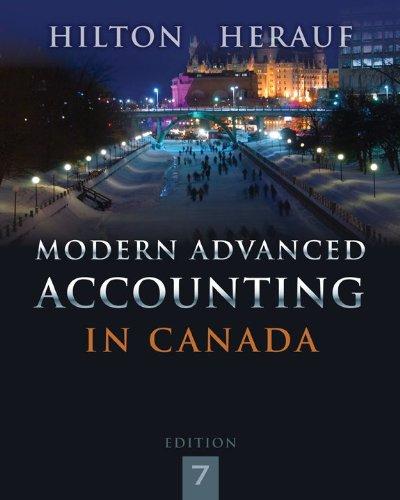Financial statements of Champlain Ltd. and its 80%-owned subsidiary Samuel Ltd. as at December 31, Year 5,
Question:
-1.png)
Additional Information
€¢ Champlain acquired 8,000 ordinary shares of Samuel on January 1, Year 1, for $129,200. Samuel€™s shares were trading for $14 per share on the date of acquisition. The retained earnings and accumulated depreciation of Samuel were $12,000 and $17,000, respectively, on that date, and there have been no subsequent changes in the ordinary shares account. On January 1, Year 1, fair values were equal to carrying amounts except for the following:
-2.png)
€¢ The patent of Samuel had a remaining legal life of eight years on January 1, Year 1, and any goodwill was to be tested annually for impairment. As a result, impairment losses occurred as follows:
-3.png)
€¢ On January 1, Year 5, the inventories of Champlain contained items purchased from Samuel on which Samuel had made a profit of $1,900. During Year 5, Samuel sold goods to Champlain for $92,000, of which $21,000 remained unpaid at the end of the year. Samuel made a profit of $3,300 on goods remaining in Champlain€™s inventory at December 31, Year 5.
€¢ On January 1, Year 3, Samuel sold equipment to Champlain at a price that was $21,000 in excess of its carrying amount. The equipment had an estimated remaining life of six years on that date.
€¢ Champlain sold a tract of land to Samuel in Year 2 at a profit of $7,000. This land is still held by Samuel at the end of Year 5.
€¢ Assume a corporate tax rate of 40%.
Required:
(a) Prepare the following consolidated financial statements:
(i) Income statement
(ii) Retained earnings statement
(iii) Statement of financial position
(b) Explain how the historical cost principle supports the elimination of the profit on the sale of the equipment from Samuel to Champlain when preparing Samuel€™s consolidated financial statements.
(c) If Champlain had used the parent company extension theory rather than the entity theory, how would this affect the return on equity attributable to shareholders of Champlain for Year 5?
(d) Calculate goodwill and non-controlling interest on the consolidated statement of financial position at December 31, Year 5, under the parent company extension theory.
Financial statements are the standardized formats to present the financial information related to a business or an organization for its users. Financial statements contain the historical information as well as current period’s financial...
Step by Step Answer:

Modern Advanced Accounting In Canada
ISBN: 9781259066481
7th Edition
Authors: Hilton Murray, Herauf Darrell





